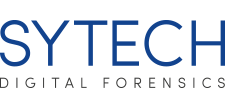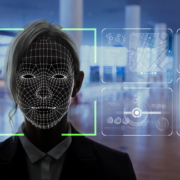Top 10 Cyber Security Threats in 2024
No matter what size your business is, as long as you use online, computer-based tools, emails, management systems and website maintenance software, you’ll need to be aware of the top cybersecurity threats. It’s essential to keep your business protected by investing in Cyber Security practices to avoid sitting in a vulnerable spot online.
In this blog, we’ll walk you through the top 10 Cyber Security threats in 2024, so you know exactly how to protect your business, and how much security you’ll need to invest in. Many companies rely on online software and management systems to carry out daily tasks and important projects which can make your business vulnerable to security issues – this is due to storing data and private information. This is where the responsibility comes in to keep your company’s data, privacy and information safe and secure.
Not only will we talk you through the most common threats, but we’ll also discuss what the best practices are to help you stay protected from them. Cyber Security can save a business from becoming the victim of a cyber attack which could result in private data confiscation and financial losses.
1. Phishing
Phishing is a very common delivery method for ransomware. The harmful links or ‘bait’ could be sent via a suspicious email or even an email that appears to be legitimate or from a ‘trusted’ sender but isn’t.
Phishing is very serious for businesses as it can cause large problems. Not only this, but it only takes an unsuspecting employee who could open the email mistaking it for a genuine one for the worst case scenario to occur. These emails unleash viruses or malware from one click of the email, but many companies make the mistake of believing it to be real due to their lack of protection and awareness ensuring secure practices are in place. Employees should be trained to recognise misleading and ingenuine emails, not open them and report them immediately to the appointed person in the business.
2. Ransomware
Ransomware is malware that is used to lock and encrypt data, devices, files or systems of victims, making them completely unusable and inaccessible. This type of attack is usually held up until the victim pays the attacker a ransom payment to release access.
A ransomware attack is one of the most common among today’s vast variations of cyber attacks. Most ransomware attacks target small to medium-sized businesses, and these attacks continue to target companies worldwide that are not prepared or protected from cyber attacks.
3. Poor Data Management
To avoid practising poor data management, you’ll need to ensure that your storage and organisation systems are managed well and kept up to date regularly.
The amount of data stored online is growing by the day, and it’s crucial to keep the data you hold safe and controlled to ensure maximum data protection. Make sure to only store data that is needed and necessary, and protect this data with appropriate software and practices such as implementing strong passwords and security measures that all staff members follow.
4. Mobile Device Vulnerabilities
Mobile device usage has increased significantly over the last few years. We not only use mobiles more, but we’ve come to depend on them much more too.
Along with this, mobile wallets and touchless payment technology have increased, meaning that mobile users taking advantage of these easier ways to pay are much more at risk of being the victim of a cyber attack. The more people using devices, the higher target there is for cyber criminals.
5. Cloud Attacks
Cloud attacks involve malicious activities that target businesses that use cloud computing systems and services. Attackers find and target vulnerabilities in cloud infrastructure, user accounts or applications to gain unauthorised access, steal confidential, private and sensitive data, jeopardise data integrity or cause a general disruption to the services.
Cloud computing systems and services are used more commonly as time goes on as they come with many advantages to businesses. They do, however, come with security challenges.
The following cloud-based threats can impact a business while making it vulnerable to cloud attacks:
- Misconfigured cloud storage
- Vulnerable cloud applications
- Incomplete data deletion
- Compliance issues
- Reduced visibility and control
- Incorrect cloud settings
It is crucial for businesses to safeguard their critical data on the cloud services and systems they install across the company.
6. Employee Training
It’s important to ensure your employees are trained to understand the importance of cyber security practices by:
- Reiterating the importance of security and data protection policies every few months to ensure all staff are in the know
- Running new starters through your practices so each employee is in the know
These practices can include:
- Establishing appropriate internet use guidelines that detail penalties for going against these cyber security practices
- Implementing strong passwords across all software and systems
- Establishing how to handle and protect customer information and any other vital data each employee may come across
7. Third-Party Exposure
Another way your business can be impacted by cybercriminals is when they outsmart security systems by hacking networks that aren’t thoroughly protected. These could belong to third parties with privileged access to the hacker’s primary target. Businesses can be at a higher risk of this happening by working with independent contractors to complete work rather than in-house employees.
8. Insider Threat
An insider threat is a concerning attack for employers to experience as this involves a level of mistrust from a potential employee, former employee, business associate, or contractor; anyone who has dealt with or currently works for the company who may have or have had access to inside information concerning the company’s security practices, data and computer/online systems.
9. IoT Device Attacks
The Internet of Things (IoT) is a range of physical objects that are upgraded to include software, sensors, and other technologies for the purpose of connecting and exchanging data with other online systems. The devices (upgraded from objects) can be used to generate data and transmit them through a communications network, an example of this might be the on-screen device in a car or a fitness watch that can connect to your mobile device.
With devices becoming increasingly required day-to-day, and as they become more common, the risks of security heighten. The interconnected nature of IoT devices creates multiple target points for cybercriminals. It is crucial to ensure that each device you own is protected to avoid data breaches and privacy infringements.
10. Social Engineering
A social engineering attack is when cybercriminals work on manipulating a person or multiple people into exposing sensitive and private information that can compromise a company’s security. Unfortunately, social engineering tactics carried out by cybercriminals are becoming more common and effective as the years go by.
Social engineering can involve cybercriminals sending persuasive and personalised messages or emails to trick individuals or creating a fictional identity to gain an employee’s trust through calls or emails. Being the victim of a social engineering attack can leave companies at a financial loss, reputational damage and sometimes costly legal repair.
Contact Our Experts for Cyber Security Support
If you’re unsure what Cyber Security Support you require, you can contact our team of specialists to find out more information.
All employees should be educated about the different types of attacks that cybercriminals are capable of, and the importance of vigilance. Keeping on top of cyber security practices such as installing and maintaining up-to-date security software, implementing multi-factor authentication, and reviewing and updating security protocols are essential in preventing cyber attacks.
Here at SYTECH, we provide a variation of Cyber Services including Cyber Essentials Certification, Penetration Testing and Incident Response Services.
The main Cyber Services we cover are:
We can offer advice and are happy to talk you through the options most suited to you and your business.
If you’d like to find out more about SYTECH, click here. If you’d like to contact our team, you can find our phone number and email address via our contact page.

